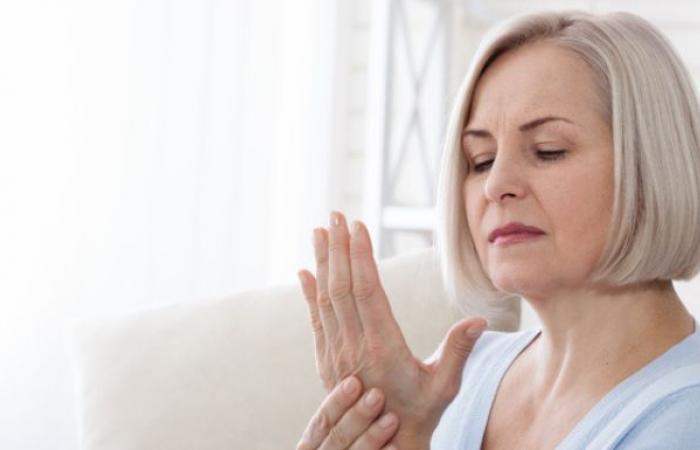Osteoporosis: who and how?
Given the increase in life expectancy, osteoporosis represents a public health issue of prime importance. So, It is estimated that 39% of women aged 65 suffer from osteoporosis.. This proportion rises to 70% for women aged 80. In women, the disease is closely linked to menopause, but men can also be affected. It is estimated that from the age of 50one in 3 women is affected and one in 5 men.
Thus, the number of people suffering from osteoporosis in France was estimated at nearly 4 million in 2019, or 5.5% of the total population. Thus, almost 490,000 fragility fractures occurred in 2019. This figure, according to INSERM, could rise to more than 610,000 in 2034. The most frequently encountered fractures affect the hip (neck of the femur), the vertebrae or the wrist. These fractures very often alter the quality of life patients (persistent pain and loss of self-confidence) but can also endanger the vital prognosis the oldest or most fragile people.
World Osteoporosis Day
The theme of this year 2024 for World Osteoporosis Day is “ Move for your bones (walk, run, climb stairs, join a gym, lift weights »
The organized activities are:
- Information campaigns : Conferences, workshops and public events organized by associations and health professionals from healthcare establishments (rheumatologist, physiotherapist, occupational therapist);
- Free screenings : bone density tests may be offered free of charge to encourage screening;
- Online and social media events : distribution of brochures and explanatory and educational videos to raise awareness among a wider audience.
This year, physical exercise is highlighted in the 2024 edition of the world day.
Indeed, sport or adapted physical activity plays a beneficial role on bone mineral density.
In older people, physical activity will maintain muscles and balance. Consequently, the risk of falls and associated fractures is greatly reduced. Conversely, lack of physical exercise and a sedentary lifestyle promote the loss of bone mass.
To know! Bone mineral density is measured by bone densitometry. To assess bone density, a certain amount of energy passes through the patient’s body and the amount of energy that “comes out” is measured. A subtraction makes it possible to obtain the quantity of energy absorbed at the bone, and thus to evaluate its density.
Other factors that help reduce the risk of osteoporosis are:
- Nutrition: calcium, vitamin D and protein are the most important elements for bone health. Proper exposure to sunlight will help you get enough vitamin D ;
- Lifestyle: consists of maintaining a healthy weight, avoiding smoking and drinking alcohol excessively;
- Identification of risk factors: these are history of fracture, a family history with osteoporosis and taking specific medications affecting good bone health;
- Getting tested and treated: if you are at high risk, you will probably need medication (anti-osteoporosis treatment) and lifestyle changes to protect against fractures;
- Living through menopause well: prescribing menopausal hormonal treatment (THM) if necessary is a way to prevent the risk of fracture linked to osteoporosis.
To know! All women should have a bone densitometry before the age of 65. The same applies to all men before the age of 70, in order to assess their personal risk. This exam is reimbursed by Social Security.
The main research issues
Research in the field of osteoporosis remains active, because many mechanisms the origin of the disease are still little known or unknown. Research and development efforts are also being carried out to better detect osteoporosis and for better treat the patients.
This research focuses in particular on:
- Gene identification factors and susceptibility genes associated with rare forms of the disease;
- Improved diagnosis : beyond bone mineral density, osteoporosis is also explained by an alteration in the architecture of bone tissue. Research work focuses on the development of clinical tools to measure this alteration. Another avenue of research: the development of a new score (FRAX 2) to assess the risk of fracture;
- Improving clinical research by the use of efficient imaging methods and by the development of biomarkers reflecting the effectiveness of the therapies evaluated;
To know! To help doctors assess the risk of osteoporotic fracture within 10 years, tools are made available to them, such as the FRAX, which integrates 12 parameters (bone mineral density, age, weight, tobacco consumption, alcohol , vitamin D and calcium deficiency, treatments previously received, history of fractures in the patient or their parents, associated chronic illnesses, etc.).
Sources
– Osteoporosis, Weakened bones at risk of fracture. www.inserm.fr. Accessed October 21, 2024.
– About Osteoporosis. www.worldosteoporosisday.org. Accessed October 21, 2024.
– Osteoporosis: diagnosis and progression. www.ameli.fr. Accessed October 21, 2024.
Written by Julie P.






